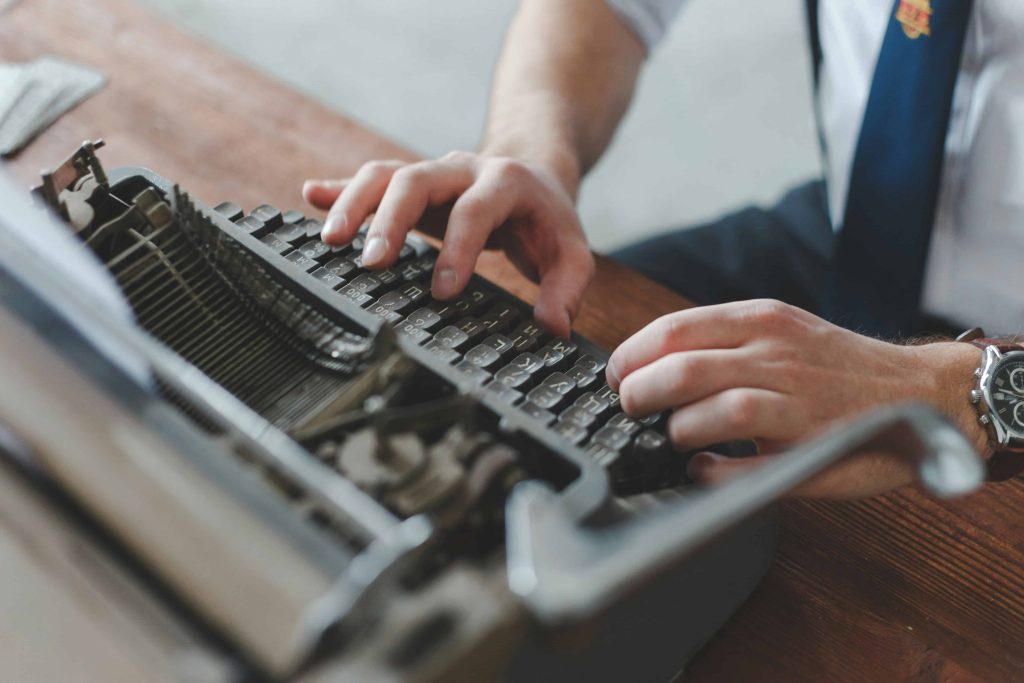
12 Sep Understanding Intellectual Property Rights for Authors
Intellectual Property Rights
Intellectual property (IP) encompasses a range of legal rights that protect creations of the mind, including inventions, literary works, and artistic expressions. For authors, understanding IP rights is crucial, as it ensures their creative works are legally protected and provides them with the means to benefit financially from their creations. A solid grasp of these rights allows authors to defend their work against unauthorized use and capitalize on their intellectual contributions, thus maximizing their potential and securing their creative legacy.

Understanding Intellectual Property
Definition of Intellectual Property
Intellectual property refers to the legal rights granted to individuals or organizations for their creations or innovations. These rights provide creators with control over the use and distribution of their creations and are intended to incentivize creativity by offering protection and the potential for financial gain. IP can include patents, trademarks, copyrights, and trade secrets, each serving different purposes and offering various types of protection.
Key Types of IP Relevant to Authors
- Copyright
- Definition: Copyright is a legal right that grants the creator of original works exclusive rights to their use and distribution, typically for a limited time, with the intention of enabling authors to receive compensation for their intellectual investment.
- Coverage: This includes literary works such as novels, short stories, poems, and scripts, as well as non-literary works like computer programs, databases, and digital content.
- Rights Granted: Copyright allows authors to reproduce, distribute, perform, display, and create derivative works based on the original. This means authors can control who can copy, adapt, and share their work.
- Trademark
- Definition: Trademarks protect symbols, names, and slogans used in commerce to identify and distinguish products or services. For authors, trademarks can apply to brand names, book titles, or unique characters.
- Usage: An author’s name or pen name can be trademarked to protect against unauthorized use in commercial contexts. Similarly, distinctive book series titles and fictional characters that have gained significant recognition can be trademarked.
- Moral Rights
- Definition: Moral rights are designed to protect the personal and reputational interests of the creator. These rights ensure that the author’s personal connection to their work is preserved.
- Components: Moral rights typically include the right to attribution (the right to be identified as the author) and the right to integrity (the right to prevent alterations that could harm the author’s reputation).
How IP is Created and Acquired
Intellectual property rights are established through the creation of original work and, in some cases, through registration processes. For instance, copyright protection begins automatically when a work is fixed in a tangible form, such as by writing it down or recording it. Trademarks require registration with the relevant authorities to gain legal protection and recognition. Moral rights, on the other hand, are often recognized automatically but can vary by jurisdiction.
Intellectual Property Rights for Authors
Copyright Protection
- What is Covered by Copyright
- Copyright protection applies to original literary works, including novels, essays, and poems, as well as audiovisual works such as films and television shows. It also extends to artistic works like drawings, paintings, and photographs, and includes digital creations like eBooks and online articles.
- Duration of Copyright Protection
- Copyright typically lasts for the lifetime of the author plus an additional 70 years. For works created by multiple authors, the term extends to 70 years after the death of the last surviving author. Works created for hire, anonymous works, and pseudonymous works generally have a copyright term of 95 years from publication or 120 years from creation, whichever is shorter.
- Rights Granted to Copyright Holders
- Copyright holders are granted exclusive rights to reproduce, distribute, perform, and display their work publicly. They also have the right to create derivative works, which are adaptations or transformations of the original work, such as sequels, adaptations, or translations.
Moral Rights
- The Concept of Moral Rights
- Moral rights focus on the personal relationship between the author and their work. They ensure that the creator’s personal connection and reputation are respected throughout the life of the work.
- Rights Granted to Authors
- Authors have the right to attribution, meaning they can claim authorship of their work. They also have the right to object to any modification, distortion, or mutilation of their work that could harm their reputation or honor. These rights are designed to protect the personal integrity of the author’s creative output.
Trademark Considerations for Authors
- Author Names as Trademarks
- Authors can register their names or pen names as trademarks to protect their brand identity. This helps prevent other individuals or entities from using similar names in a way that could cause confusion or dilute the author’s brand.
- Titles and Characters as Trademarks
- Book titles and characters that have gained significant recognition can be trademarked to protect their unique identity. This is especially important for titles of popular series or iconic characters that have become synonymous with the author’s brand.

Protecting Intellectual Property
Importance of Registration
While copyright protection is automatic, registering work with the relevant authorities provides several advantages. Registration establishes a public record of the copyright claim and is a prerequisite for filing a lawsuit for statutory damages and attorney’s fees in the event of infringement. Trademark registration similarly provides public notice of ownership and helps prevent others from using similar marks that could cause confusion.
Copyright Registration Process
- Create a Work
- Ensure that the work is original and fixed in a tangible medium, such as written down or recorded. This is the first step in establishing copyright protection.
- Submit an Application
- Complete the copyright registration form, providing details about the work and its authorship. Submit the application to the relevant copyright office, such as the U.S. Copyright Office.
- Pay the Fee
- The registration process typically involves a fee, which varies depending on the type of work and the country. Ensure payment is made as part of the submission process.
- Receive a Certificate
- Upon approval, you will receive a certificate of registration, which serves as legal proof of your copyright claim and can be used in legal proceedings if necessary.
Trademark Registration Process
- Conduct a Search
- Perform a thorough search of existing trademarks to ensure that your mark is unique and does not conflict with existing registered trademarks.
- File an Application
- Submit a trademark application to the relevant trademark office, including a clear representation of the mark and details about its use in commerce.
- Examination
- The trademark office will examine the application for compliance with legal requirements and potential conflicts with existing trademarks.
- Publication and Registration
- If the application passes the examination, it will be published for opposition. If no opposition is filed, the trademark will be officially registered, granting legal protection.
Best Practices for Protecting IP
- Copyright Notices
- Display copyright notices on your work to inform the public of your claim to the work and discourage infringement. The notice should include the © symbol, the author’s name, and the year of first publication.
- Digital Rights Management (DRM)
- Implement DRM technologies to control access to and usage of digital content. DRM tools can prevent the unauthorized copying and sharing of digital works.
- Contracts and Agreements
- Use contracts to clearly define intellectual property rights and obligations with publishers, collaborators, and other parties. Agreements should address issues like rights transfers, licensing terms, and royalties.
Challenges and Considerations
Common IP Issues Faced by Authors
- Copyright Infringement
- Unauthorized use of copyrighted works can lead to legal disputes. Authors should actively monitor the use of their work and take action against infringements to protect their rights.
- Fair Use
- Fair use allows for limited use of copyrighted material without permission for purposes such as criticism, commentary, and education. Understanding fair use is essential to navigating legal boundaries and avoiding accidental infringement.
- Licensing and Contracts
- Licensing agreements and contracts play a critical role in determining how a work can be used and by whom. Authors should carefully negotiate and review these agreements to ensure favorable terms and protect their IP.
The Role of Technology in IP Protection
- Digital Piracy
- Digital piracy involves the illegal distribution of copyrighted works online. Authors can combat piracy through monitoring services, digital watermarks, and legal action against infringers.
- Protecting Work in the Digital Age
- Technology offers various tools for IP protection, including digital watermarks, content tracking, and encryption. Authors should leverage these tools to safeguard their works from unauthorized use and distribution.

CONCLUSION
A thorough understanding of intellectual property rights is vital for authors to protect their creative works and ensure they receive proper recognition and compensation. By grasping the essentials of copyright, trademark, and moral rights, authors can navigate the complexities of IP protection effectively. Implementing best practices and seeking legal advice when needed will further safeguard their intellectual contributions and secure their creative legacy. Empowering yourself with knowledge and proactive measures is key to thriving in the competitive landscape of creative work.
KEY TAKEAWAYS
- Importance of IP Rights: Intellectual property (IP) rights are crucial for authors as they protect creative works and provide financial benefits. A clear understanding of these rights helps authors defend their work and capitalize on their intellectual contributions.
- Key Types of IP:
- Copyright: Grants exclusive rights to reproduce, distribute, and adapt original works. It applies to various forms of literary and artistic creations.
- Trademark: Protects symbols, names, and slogans. Authors can trademark their names, pen names, book titles, and distinctive characters to safeguard their brand identity.
- Moral Rights: Ensure that authors maintain their personal connection to their work, including the right to attribution and to object to modifications that harm their reputation.
- Creation and Registration:
- Copyright: Automatically applies when a work is fixed in a tangible form. Registration with the relevant authorities enhances protection and provides legal advantages.
- Trademark: Requires registration for legal protection. This process includes searching for existing marks, filing an application, and undergoing examination and publication.
- Protecting IP:
- Copyright Notices: Displaying these on your work can deter infringement.
- Digital Rights Management (DRM): Helps control access and prevent unauthorized sharing of digital content.
- Contracts and Agreements: Clearly define IP rights in dealings with publishers and collaborators.
- Challenges:
- Copyright Infringement: Authors must monitor and act against unauthorized use of their work.
- Fair Use: Understand the limitations and exceptions for using copyrighted material.
- Digital Piracy: Utilize technology such as digital watermarks and content tracking to combat illegal distribution.
- Conclusion: Understanding and implementing IP rights and best practices is essential for authors to protect their creative works and ensure proper recognition and compensation.
FAQ
What are the primary types of intellectual property rights that authors should be aware of?
Authors should be familiar with several key types of intellectual property rights: Copyright, which protects original literary and artistic works; Trademark, which safeguards brand names, book titles, and characters; and Moral Rights, which preserve the author’s personal connection to their work and prevent harmful alterations.
How does registering intellectual property benefit authors, and what is the process?
Registration of intellectual property, such as copyrights and trademarks, provides legal proof of ownership and aids in legal protection. For copyright, authors must submit an application to the relevant office and pay a fee. Trademark registration involves a search for conflicts, filing an application, and awaiting approval.
What are some common challenges authors face regarding intellectual property, and how can they address them?
Authors often encounter issues such as copyright infringement, fair use disputes, and digital piracy. They can address these by actively monitoring their works, understanding fair use laws, and using technology like digital watermarks to protect against unauthorized distribution. Contracts and legal advice are also crucial for managing licensing and rights.
Are you a new author weighing your publishing options? Our detailed analysis of print and digital formats will guide you through the decision-making process.
